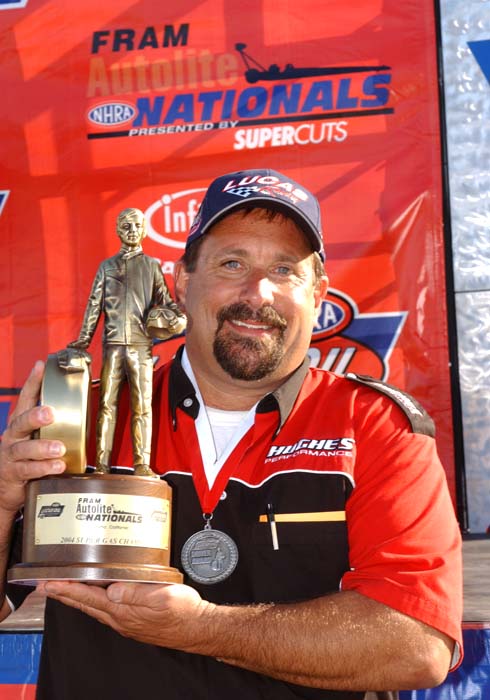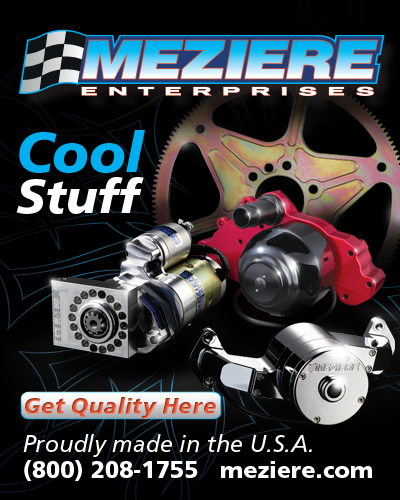GUEST COMMENTARY – JIM HUGHES: THE PROCESS ONLY IMPROVES WITH INPUT

A recent article published here in CompetitionPlus.com regarding the viability of changing the indexes for the Super classes generated input and healthy debate. There is no doubt, certain aspects of our style of racing need to be updated and/or reorganized, if only to keep up with the changing times and increase of horsepower our industry has developed.

A recent article published here in CompetitionPlus.com regarding the viability of changing the indexes for the Super classes generated input and healthy debate. There is no doubt, certain aspects of our style of racing need to be updated and/or reorganized, if only to keep up with the changing times and increase of horsepower our industry has developed.
Wally Parks, when he organized drag racing into a recognized sport, had a vision of where he hoped to lead the industry. He was a man of conviction, and with a clear passion for leading the racers in a common direction. The direction has changed in many aspects of the sport and keeping up with the rules and regulations is anything but a simple task. However, as a successful business owner, one lesson which has become clear to me over the years is that if you hope to remain in business you must adjust to the trends. Those who don't often struggle to make good, logical, business decisions.
I'm glad the NHRA is now listening to the sportsman community because I feel, and it's abundantly clear, that the sportsman racer is firmly the backbone and foundation of NHRA drag racing. Sometimes it's hard to understand what a group wants if the group remains silent when prompted.
With this said, when nearly 4,500 racers were contacted by the NHRA to offer their input for the future of Super-class racing, primarily in changing the indexes, I am still amazed that approximately 1,600 of those racers responded. Even then, the responses were about 50/50 as to what course the NHRA should take. Knowing a change of this magnitude could alienate a large number of their customers, primarily the silent ones, the NHRA decided to leave the class as is.
Steve Williams and myself were the only two racers quoted in the article, and in this article, we offered our opinions. Together, he and I serve on the PAAC committee and take our roles in helping the NHRA to make better educated decisions when it comes to sportsman racing and sponsor participation in our community very seriously. We always strive to hear the voices of those we represent and encourage their input.
Now, when we interviewed for the article, it wasn't because we had legislation in the works. We just wanted to offer what we felt could be a new direction aimed at making the throttle stop, super-class style of racing both safer and better for spectator appeal. We knew going into this deal we would have our detractors and those who felt we didn't represent everyone's best interest. Throughout life, many times, I've subscribed to the "if it ain't broke, don't fix it" mentality. This time, I just believe there's a better method to how we can operate.
Change always comes at a cost to someone, but when the change could affect as many as 20-percent, then we need to study the change so no single racer is left behind.
If there's one major positive the article brought out, it's the abundance of good quantifiable ideas we could suggest to the NHRA advisory board.
Point One -- We have a major variance in the mile-per-hour but the elapsed time remains the same. It is my belief the high mile-per-hour cars are not the issue as suggested by some. In fact, Steve has already won multiple national events this year with a high mph approach. It's the slower or average speed cars which inspire their drivers to look over their shoulder, sometimes on a marginal track with little to no groove, which could be the issue here. When you are looking behind you for the faster car coming at speeds upwards of 150 miles-per-hour, this is clearly not a safe practice. To put a speed limit in place would only be a temporary, band-aid, fix at best.
Point Two - Some have suggested the stops are the root of all evil, while others believe we should keep the stops but dump the timers.
Point Three - Is shortening our race distance to 660 or 1000 feet the answer? Some believe so. Or is it another band-aid?
Point Four - Maybe an answer might be to make Top Dragster a 64-car field with a 6.90 minimum to participate. We could do the same in Top Sportsman but make it a 7.90 minimum. This would allow faster cars to run in a class that was designed for fast sportsman bracket racing. Otherwise we will continue to see 6.70@200+ mph dragsters not make the T/D 32 car field and fall back to run 8.90@195+ mph in Super Comp.
Of course, there were a few who suggested if we didn't like the way the class has run for 30 years we could always take up fishing. Just the kind of constructive criticism we're looking for.
So why did I write this? I just felt it was important to let those who race this style, or any class of racing, know their input is important. Everyone has an opinion and if they’re different that's okay. We need to look at what's best to grow and keep our sport alive.
Give the NHRA some credit here. They are working to make sportsman racing better for all of us. They don't deny there has been a disconnect, but by their actions this season, they are showing a willingness to try for better communications. If they are trying, isn't this really all the racer can ask?
For every one racer who was vocal, there are ten others who didn’t say a thing. We can only make this world we race in better if we all participate in the improvement process.
The act of cutting and pasting articles from this publication to a message board is a clear copyright violation as is pulling photos to post on social media sites. All articles and photography published in CompetitionPlus.com are protected by United States of America and International copyright laws unless mentioned otherwise. The content on this website is intended for the private use of the reader and may not be published or reposted in any form without the prior written consent of CompetitionPlus.com.





































